Wide open meadows. Winter chill. Fog. A lone scarecrow. Eerie silence. Dusty roads. Woods in the distance. A large estate walled out from the surroundings. And smack in the middle of it, Sandringham House. The inside is just as busy, as the surroundings are not. It’s still just as silent though. The house staff quietly but adeptly go about making arrangements for the Royal family’s Christmas weekend. Then back to the meadows. A lone car. Nothing in sight on the road. And then we meet her. Kristen Stewart as Princess Diana. Shades, a green and red checkered coat. Hair as blonde as snow, short, not even touching the shoulders. A café. The Princess asks for directions from a stupefied barista. Back to Sandringham, everyone is gradually arriving. There’s gossip about Diana. The Prince is there before his wife. Then a distraught Diana tries to flag a tractor but pulls over. The chef is on his way and meets her. The lone scarecrow is acknowledged. Diana runs to it and back. The Queen arrives in Sandringham. An overhead look. A smoky Sandringham Estate as a lone car enters. And then the word.
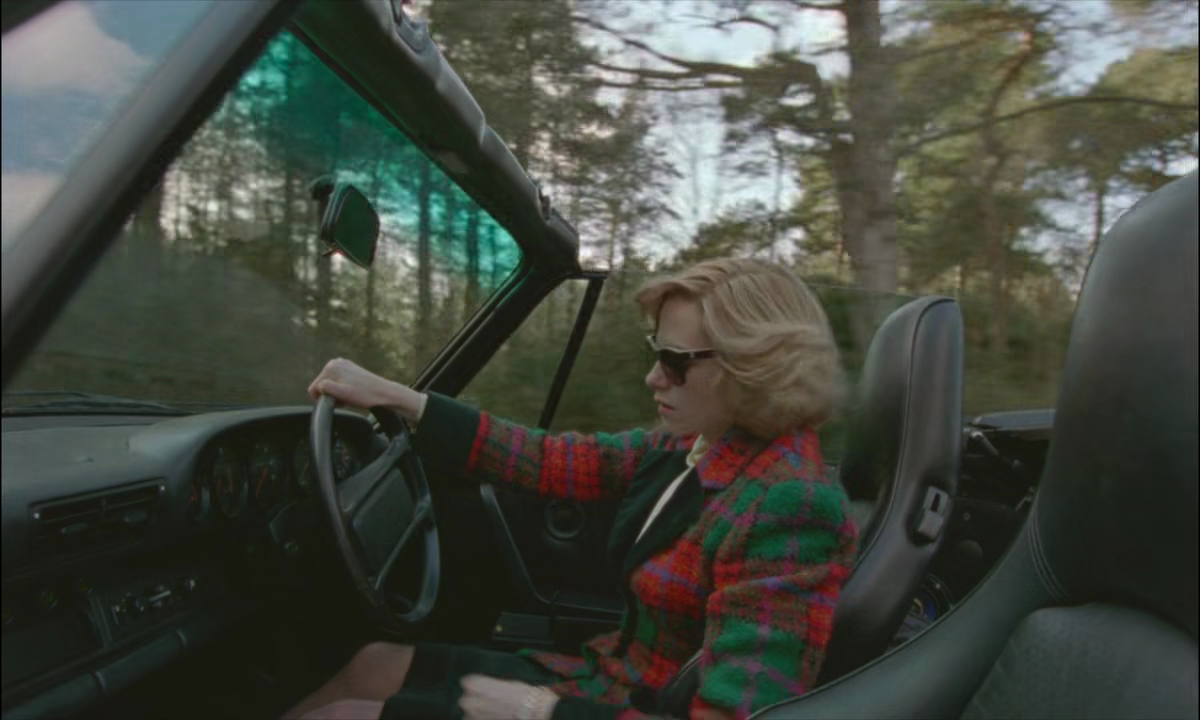
‘Spencer’. Exquisite, enchanting, and elegant. That’s how I’d describe the first ten minutes before the name, and the whole film actually. Spencer’s world is intoxicating with the silence and the smokiness and the anonymity it seems to invite or cloak anyone with. The Sandringham however, is nothing like that. It’s intimidating with the invisible surveillance and cold disposition. The lazy winter chill becomes a consciously perpetuated spine-chill inside the estate. And Diana’s charisma is swallowed into a caricature, an image imposed by uninformed impressions. A suffocating lack of safety gradually approaches threateningly from all directions. Claustrophobia intensifies through nightmares. The martyrdom of Anne Boleyn bears heavily on the mind. Secret candlelit Christmas celebrations are conducted. The anxiety accumulates as the hours pass. Solitude is heavenly in the silently comforting meadows. It’s never long-lived, however. Duties call continuously. An imposing atmosphere of formality. And then catharsis. An escape in a dreamland. A drive. 80s pop. And then again, the word.
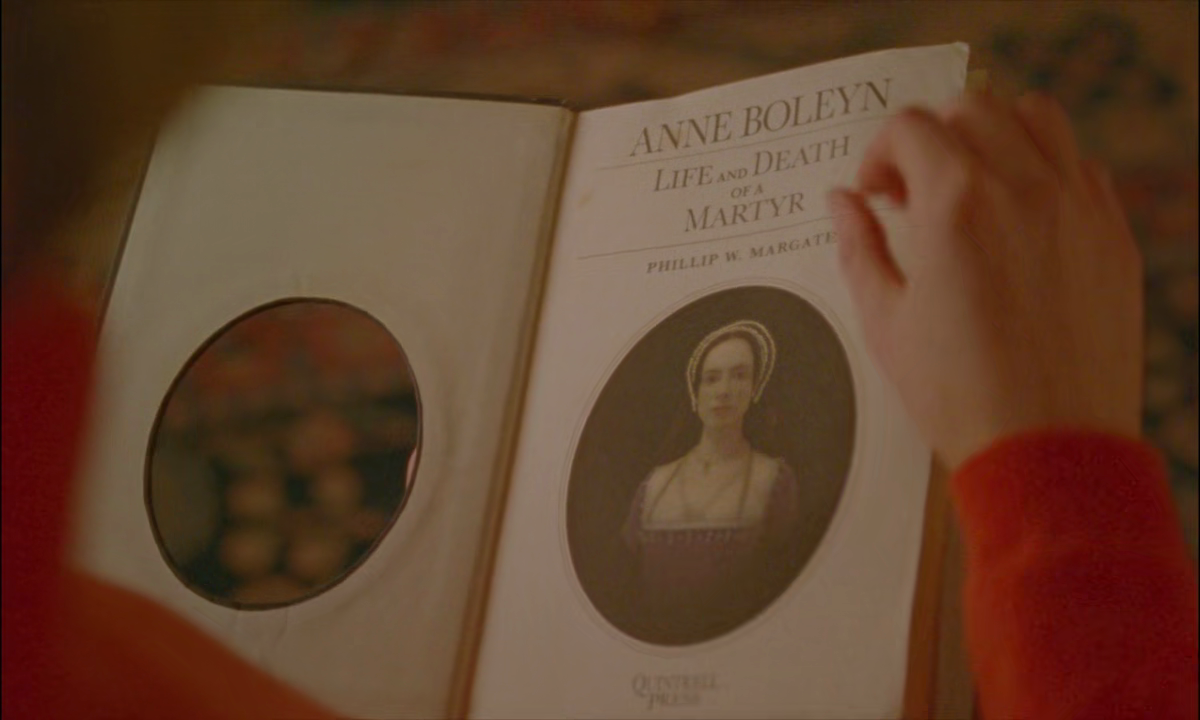
‘Spencer’. Free-spirited. Cautiously expressive. Forcefully composed. Quietly imploding. Haunted by ghosts. Lost in legacy. Kristen Stewart has disappeared into her role. She carries herself with the dignity that everyone recalls whenever they think Lady Di. The intense stress doesn’t stay under the surface though. Stewart is incredibly contained in her performance, but you can see the subtlety of expressions in her eyes, or the way she moves her lips. The force of Diana’s personality breaks through the screen and yet never really escapes through the cage that is her composed disposition. Left to herself, she is palpably unsettled but liberated. When she tears the curtains’ or creeps out at night, or runs across the field to her fathers’ farm’s scarecrow, the rebellious streak can be felt pulsing through her veins. Kristen beautifully expresses the adrenaline despite the composure. She’s embodied anxiety in her body language. The tension in her gait, or the unsaid stress in her eyes, or her clenched teeth, and shaking hands, are among some of the ways she’s conveyed how unsettled her character is.
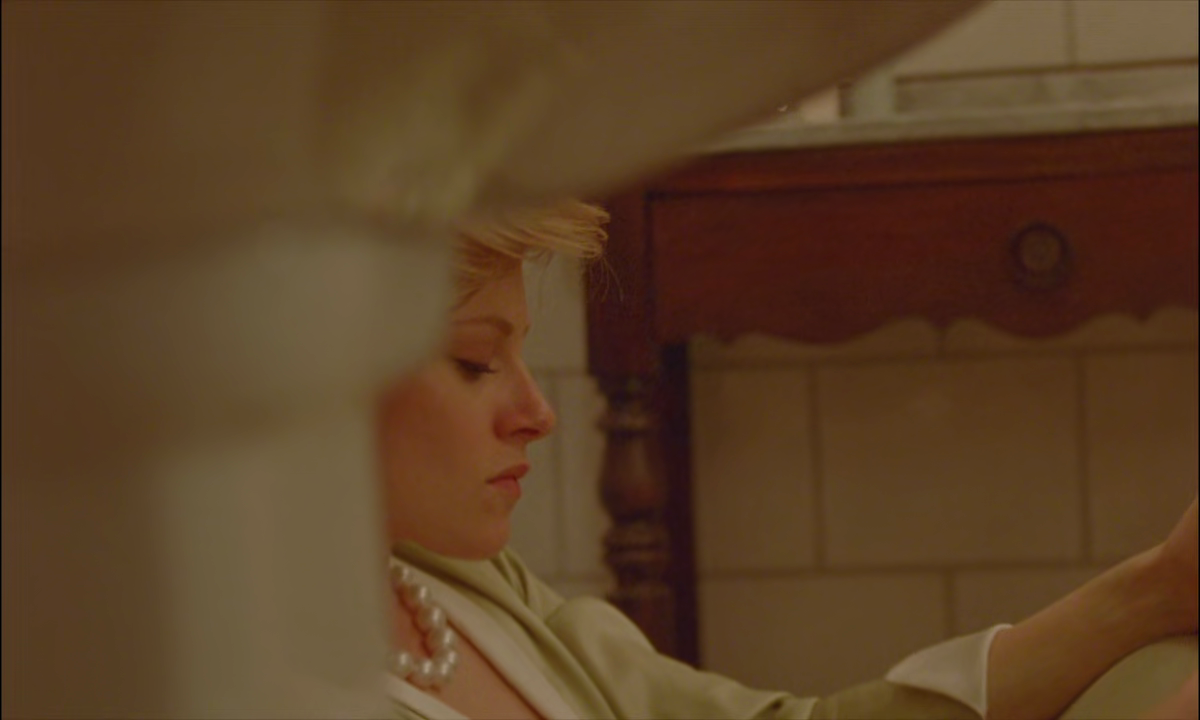
Cinematographer Claire Mathon has delivered a visual treat. Every frame is a painting. With a dreaminess clouding the entire affair, there’s a respectful lack of vibrancy. And in the midst of this reverent greyness, Diana stands out with her bright wardrobe. And then there’s symmetry. Like watercolour paintings, it’s very soothing on the eyes. The few seconds of bird eye when the name of the film appears, are simply stunning, with the frame simply overwhelming the senses with the extent of symmetry, both large scale and minute. However, apart from looking gorgeous, and being extensively symmetrical, what sets the visuals of Spencer apart are the claustrophobic frames. The distribution of negative space is generally uniform, but there’s barely any in the frame during the most stressful scenes. Diana looks literally boxed in on multiple occasions. Pearls falling down the stairs. A black pool ball on the floor. A bird carcass on the road, as cars ride on it, none ever actually running it over. A pheasant staring into the distance as Diana tells it to fly away. An empty meadow with a convoy riding out in the distance.
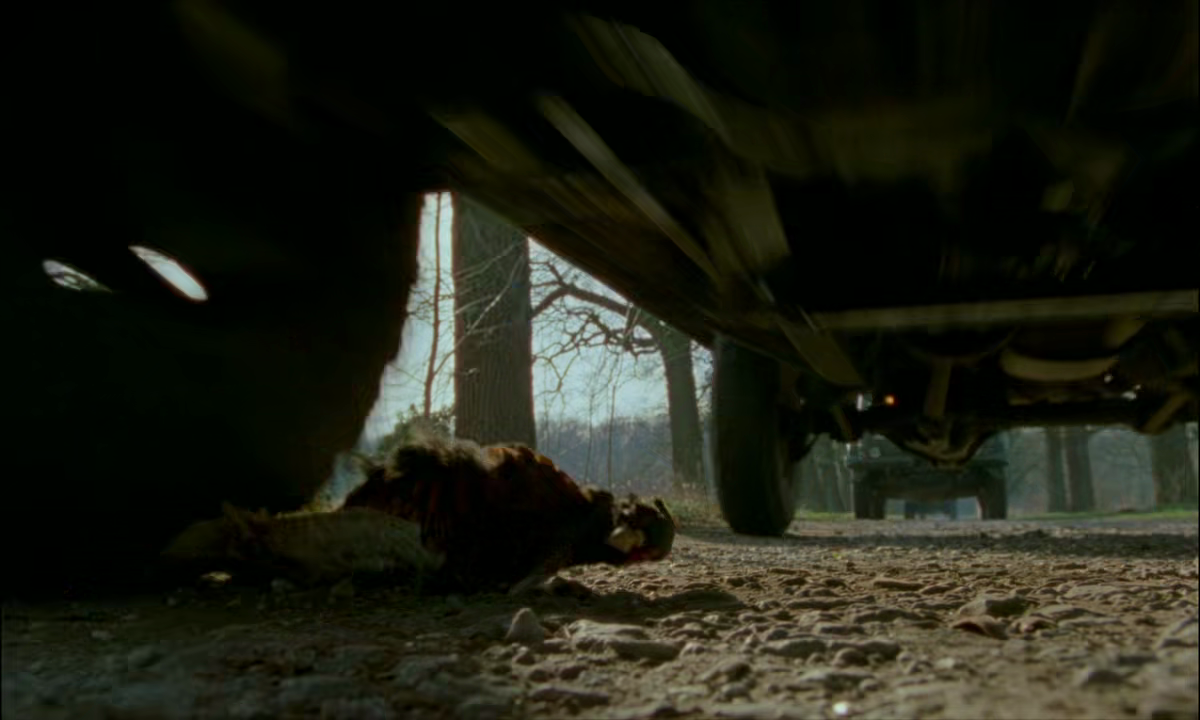
On top of the intoxicating tranquility in every frame that captures nature, there’s intelligent use of tracking shots. When Diana’s running is a manifestation of her urge for liberation, the camera follows her from the side. When it’s about her escape from scrutiny, she’s closely followed from behind, that is, there’s barely much in the field of vision except her figure visibly yearning for freedom from surveillance. And when the fear takes a hold of her, and she’s pent up to a breakdown, she’s followed from the front, with some negative space left in the frame to complement the suffocation in her eyes. Jonny Greenwood’s background score has an immense impact on this. The anxiety-inducing composition beautifully flits between measures complementing her mood. And yet, it’s unbelievably calm during expositional scenes, like when we’re seeing the activities inside Sandringham before the Royal family arrives. And speaking of music, Mike & The Mechanics’ ‘All I Need Is a Miracle’ is the perfect closing song. The ending is unbelievably energetic, for the suffocating nature of the film.
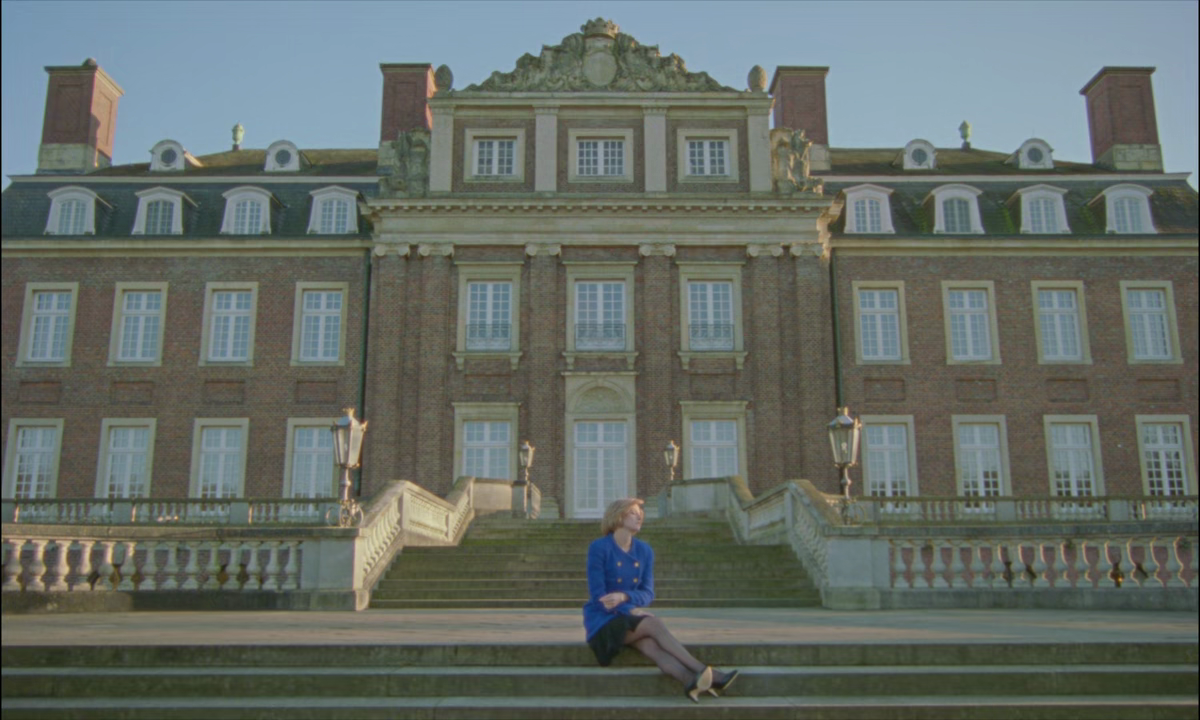
The best thing about Spencer, after Kristen Stewart’s career best performance, is the lack of pandering. The biggest criticism that any story about the Royal family gets, is ‘Why should we care?’ Pablo Larraín doesn’t try to get you to care. It’s a very raw, albeit somewhat fictionalized slice-of-life story about the boldest Royal family member before her sons withdrew from the Monarchy. It’s a compassionate narrative. Told in the form of a series of conversations with the staff, it explores the unfair nature of pressure created by others’ perception of her. Then there’s one particularly disturbing altercation with her husband, which is possibly the best shot scene in the film. With a trunk shot-like angle, the camera slowly closes in on each of the speakers, from the middle of the pool table on whose two ends they’re standing. The frames alternate between them, and the anxiety keeps building with the sound of bullets in the background forming an uncanny rhythm that peaks and fades out when Diana drops a pool ball on the floor. However, the boldest piece of writing is a line from her to her dresser. It’s quintessential Kristen Stewart, but fits right into Diana’s image as painted by Spencer.
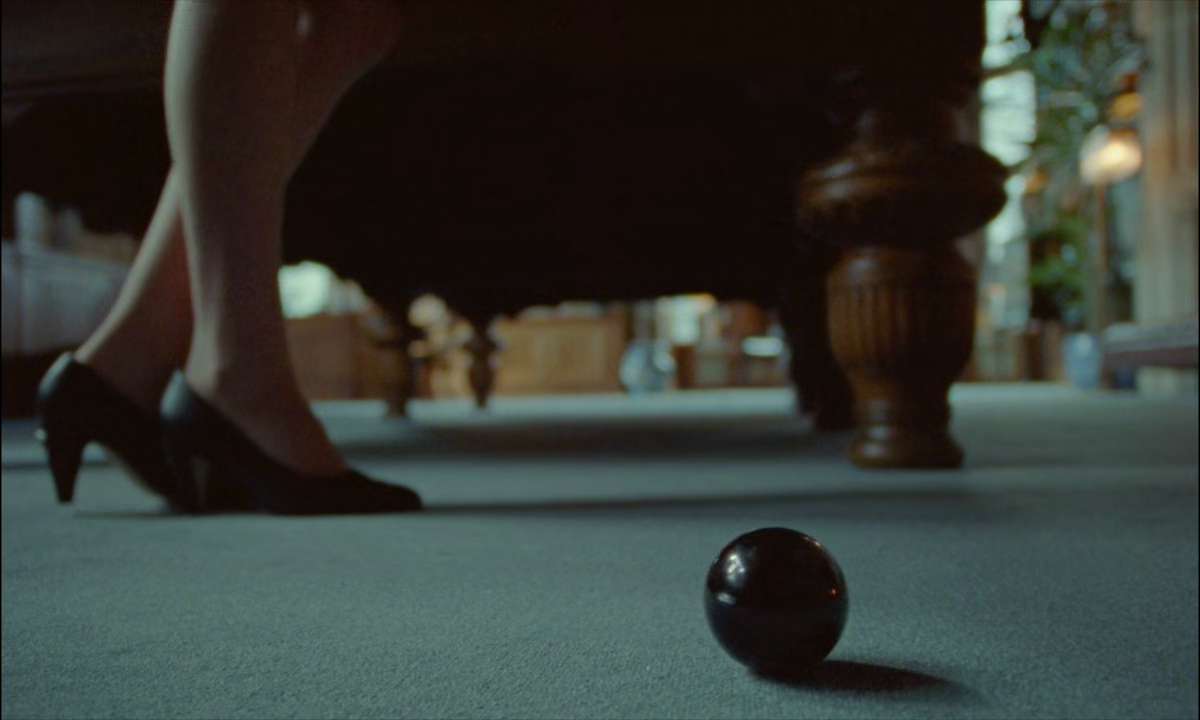
Anne Boleyn’s story of Martyrdom is a great example of anxiety inducing narrative devices. Anne’s story is once mentioned in passing, and despite being brought up a little too often, it doesn’t feel overused. When Diana hangs her pearls on the headless mannequin on which her fathers’ farm’s scarecrow’s outfit was hanging, and then talks to her, it’s a foreshadowing that Anne might show up for real. The blurring of lines of reality, isn’t extensive, and it’s easy to declutter the narrative. Nonetheless, the nightmares are structured authentically with meticulous attention to symbolic elements, and visual design. The colour palette doesn’t change, but the music does. The framing becomes more contained, with focus on Diana’s face, conveying the build-up of stress. And then Anne Boleyn appears in my favourite scene of the film. Diana is standing on top of the staircase at her old home, in her extravagant dinner dress, precariously balancing her feet. The urge to let go has been accumulating from the opening of the film, and it culminates in this moment of confusion.
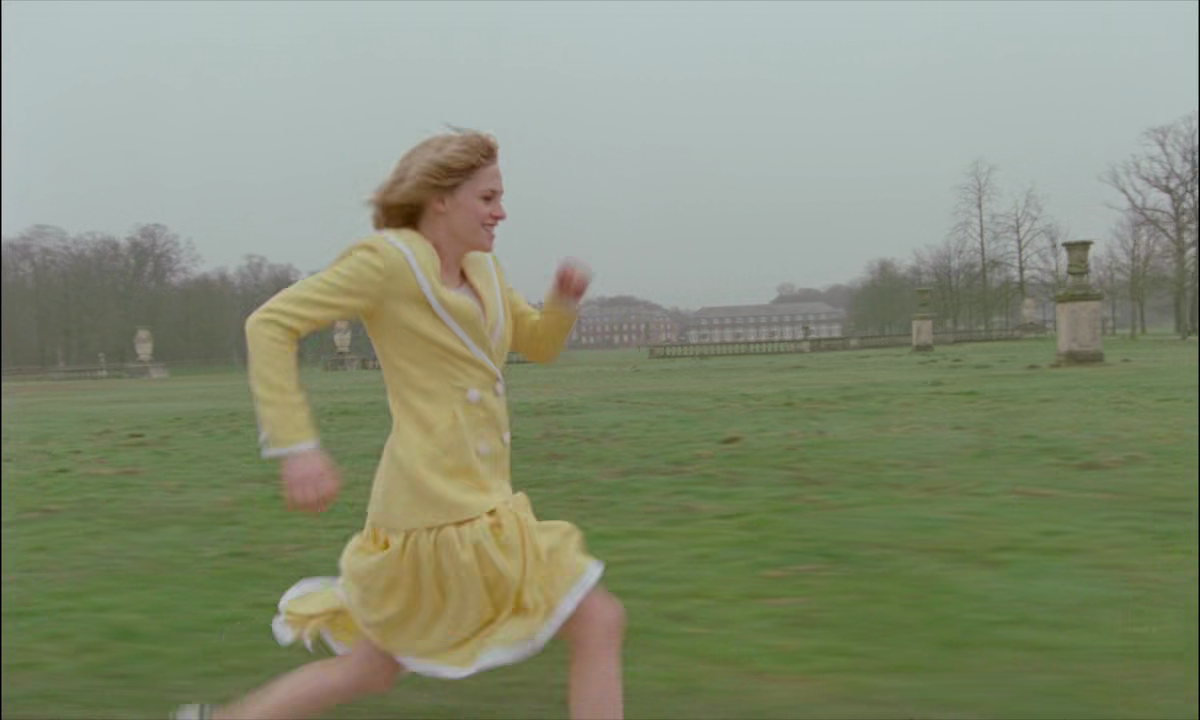
And then it happens. As she stands on top of the stairs, you realize how all the conversations till then had been a series of people telling her to ‘Conceal, don’t feel, don’t let them know.’ You can see it in her eyes, the urge to finally let the wave of emotions get the better of her. She’s acted impulsively, much more than she has been till that moment. No one’s going to understand her actions from here on in, no matter how well an excuse she can come up with, and ‘Well, now they know’. She’s physically tired of making. It’s time to break. ‘It’s time to see what I can do.’ As she watches the steps loom under her ominously, and yet beckon to her with a comforting promise of silence, her life flashes in front of her. A montage of being a wide-eyed girl, who had a dream come true marriage, but somehow found herself here. As if on cue, the camera starts following her youngest self running, and stays with her as she grows up, and then turns into Kristen herself. Diana’s spirit has taken off, ‘No right, no wrong, no rules for me.’ And at that moment, as she runs on the screen, she gets it, her ‘Let It Go’ moment.

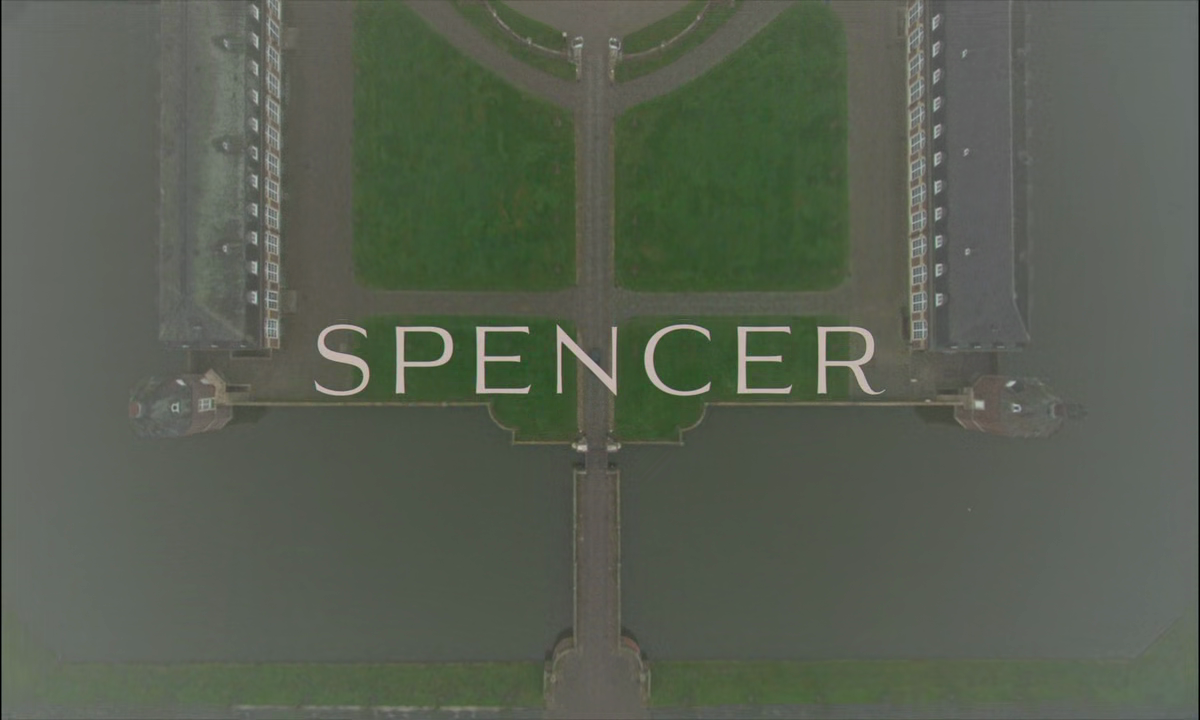
Comments